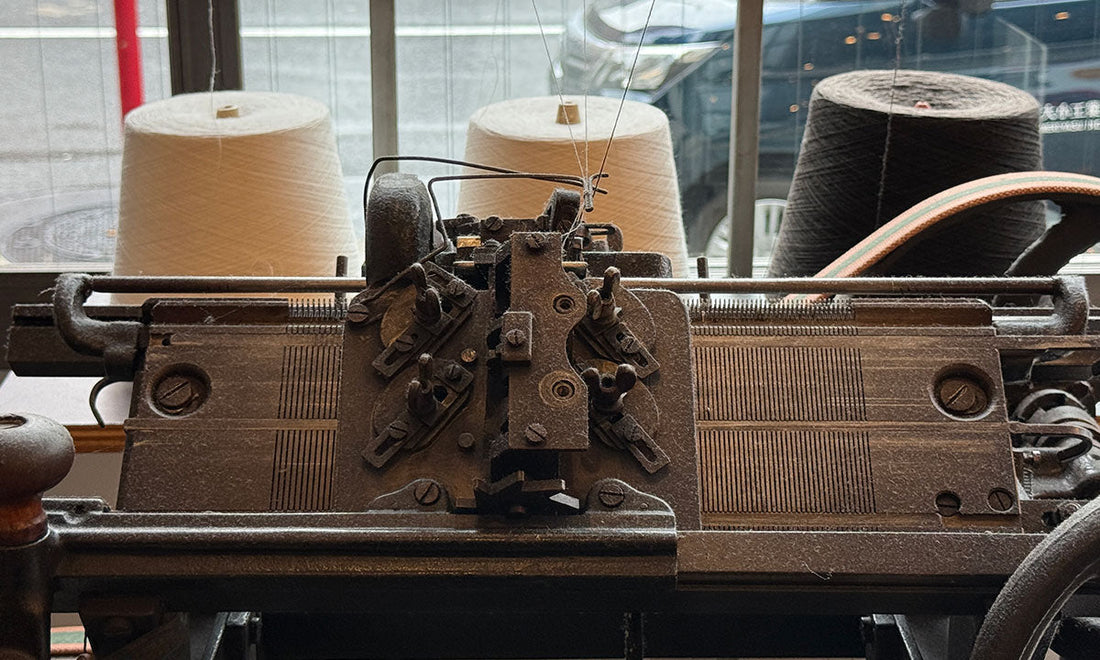
The Best Braided Cord
Share
Each pair of MERI is handwoven by skilled artisans.
Even the cords are braided using old traditional machines.

This is our proud, finest zori cord.
Can you see the difference from a strip of cut knit fabric?

If you look closely at the stitches, you’ll notice that the zori cord has a looser weave compared to the knit fabric strips used in our workshops. This allows it to trap air, making it soft and fluffy. The many ultra-fine threads used are hollow yarns—just as the name suggests, they are hollow inside. This creates a springy cushioning and an indescribable comfort, giving your toes a true sense of freedom.

We are a knit factory in Tokyo, with nearly 80 years of experience producing ribbed fabric. Around 2010, we encountered a craftsman from Tohoku who specialized in making fabric zōri. It was through this meeting that we first discovered the existence of these sandals.
The craftsman showed interest in the knit fabric we had created, and in an exchange—our fabric for their fabric zōri—the sandals found their way into our hands. At the time, we hardly even knew such footwear existed. But the moment we slipped our feet into them, we were astonished by their comfort. It was a feeling so unique that it sparked an inspiration only a knit factory could have.
With the desire to craft fabric zōri unique to a knit factory, we began apprenticing under the artisan in Tohoku, making repeated visits to master the techniques. We remain forever grateful for the kindness with which we were welcomed.
We decided to create fabric zōri using our own original cords, and the first step was to try braiding the cords ourselves. Most fabric zōri are made by cutting old cloth or knit fabric into strips, but we had a feeling that if we braided the cords from scratch, the result would be soft and comfortable.
So, we began our research by using a pre-war braiding machine—one that was originally designed for weaving tape. From there, we experimented endlessly: Which material should we use? How many threads should we braid? What width would be best? It was truly a process of trial and error.
We changed the materials, adjusted the number of yarns, altered the width of the weave, and experimented with different gauges—exploring every possibility, only to set each one aside and start again.
When made with 100% cotton, the cords were too heavy; even at 10 gauge, they still felt weighty. What we longed for was something light and soft, yet firm. Strong enough to endure washing and resilient enough to be worn for many seasons.
Back then, our braiding skills were far from perfect. So we sent the cords we had made up to Tohoku, where the artisans kindly collaborated with us, conducting countless trials together. We remain deeply grateful for their patience and support throughout those early struggles.
After about a year of trial and error, we finally reached the ideal solution: a 50% cotton, 50% polyester blend. The polyester was a hollow fiber, equipped with antibacterial and deodorizing functions.
This is our best braided cord.
The cord by itself is not enough. Only through the hands of skilled artisans does it become MERI—both strong and gentle."
We’ll talk about the artisans another time…
